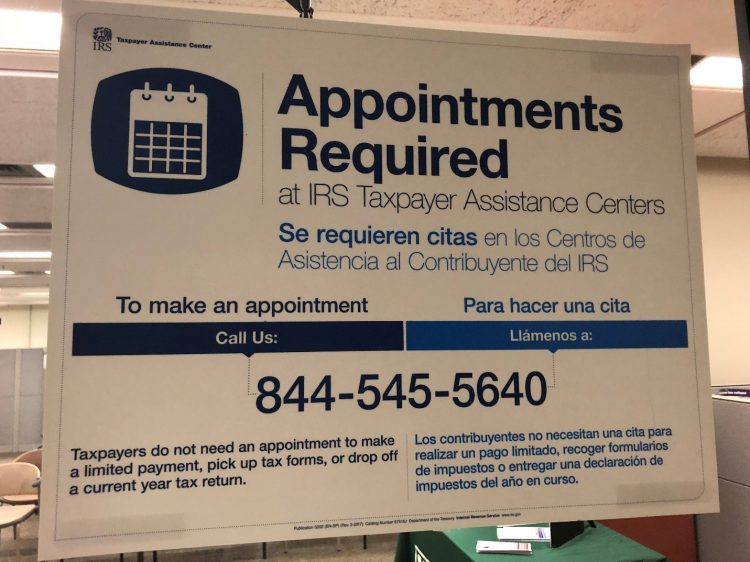Subscribe to the NTA’s Blog and receive updates on the latest blog posts from National Taxpayer Advocate Nina E. Olson. Additional blogs from the National Taxpayer Advocate can be found at www.taxpayeradvocate.irs.gov/blog.
In my most recent Annual Report to Congress, I focused on Taxpayer Assistance Centers (TACs) as one of the Most Serious Problems facing taxpayers. My concerns about TACs center on whether the TACs are meeting the needs of a diverse taxpayer population, both through the services available and the geographic coverage of the TACs.
As of the end of calendar year 2017, the IRS operated 371 TACs in the 50 states, the District of Columbia, and Puerto Rico; as of June 2018, the IRS now operates 362 TACs. The TACs provide the main source of in-person, face-to-face assistance from the IRS to taxpayers. The IRS has been reducing the services offered in TACs for many years and recently switched to a mainly appointment-based service model for TACs. While I am pleased to learn that the IRS has recently modified its appointment procedures and will now allow taxpayers to make same-day appointments, I remain concerned as to whether this message has reached the field offices and how the IRS is informing taxpayers of the new policy.
In my 2017 Annual Report to Congress, I published a photo collage of four TACs with “Appointments Required” signs affixed to the doors. I find these signs to be intimidating to taxpayers – nowhere do the signs indicate taxpayers can walk in and potentially make an appointment. Despite the change to the Internal Revenue Manual that now permits same-day appointments, the signs on the four TACs photographed last year remain the same as of the last week of May. For example, below is a current photo of the Arkansas TAC sign:

This sign is not welcoming to taxpayers and is likely to lead to taxpayers turning away at the door, thinking they need to come back only when they have an appointment. I urge the IRS to consider changing the wording on this sign to read:
“APPOINTMENTS RECOMMENDED BUT WALK-INS ARE WELCOME. Although appointments may be available for walk-ins, to avoid a wait, call 844-545-56400 or go to IRS.gov to make an advance appointment.”
This message would signal to taxpayers that the IRS actually wants to speak to them and accommodate them. At the same time, it would warn taxpayers about potential delays and wait times and suggest alternatives. The proposed language conveys the original message but also makes clear that the IRS is respectful of taxpayer needs and preferences and will do all it can to honor them.
Additionally, the IRS website to locate your nearest TAC continues to display the message below, which does not inform taxpayers that they can still visit a TAC without an appointment:

I am also pleased to learn that the IRS has implemented the Field Assistance Scheduling Tool (FAST), which allows taxpayers to search for and schedule an appointment, including first available ones, without calling the IRS. I encourage the IRS to continue implementing this option to reduce the burden on taxpayers seeking TAC assistance.
Messaging across the IRS should be consistent and taxpayer-friendly, providing taxpayers with the full range of options for resolving their tax issues or getting assistance with a tax-related question. Providing taxpayers with information and assistance are cornerstones of the right to quality service and the right to be informed. For a full discussion of my concerns related to TACs, see the 2017 Annual Report to Congress. You can find the IRS’s response to my 2017 recommendations in Volume 2 of the Fiscal Year 2019 Objectives Report to Congress (page 105).
In next week’s blog, I will discuss the IRS’s efforts to close TACs and its compliance with congressional concerns about such closures.
The views expressed in this blog are solely those of the National Taxpayer Advocate. The National Taxpayer Advocate is appointed by the Secretary of the Treasury and reports to the Commissioner of Internal Revenue. However, the National Taxpayer Advocate presents an independent taxpayer perspective that does not necessarily reflect the position of the IRS, the Treasury Department, or the Office of Management and Budget.
Source: taxpayeradvocate.irs.gov

Leave a Reply